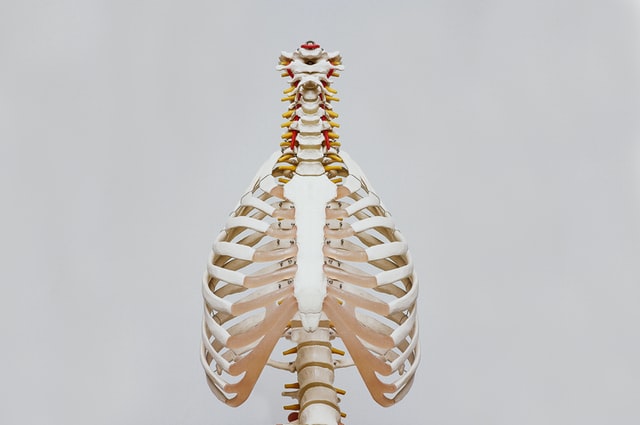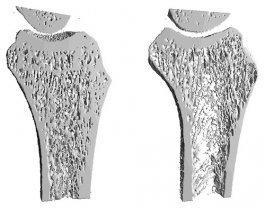Every person has a skeleton made up of many bones. These bones provide structure to your body, allow you to move in a variety of ways, and protect your internal organs, among other things.

Bone diseases are conditions that result in the impairment of normal bone function and can make bones weak. Weak bones should not just be excused as a natural part of ageing. Strong bones begin in childhood! People of all ages can improve their bone health.
Bone is a connective tissue that contains a hardened matrix of mineral salts and collagen fibres. Its cells include osteocytes and the free-roaming osteoblasts (which build bone tissue up) and osteoclasts (which break bone tissue down). In addition to providing shape and structure to the body, bone stores mineral salts under an outer layer a compact bone tissue called the periosteum.
Bones are the scaffolding of the body, they support the body’s structures, help to protect internal organs, and (in conjunction with muscles) facilitate movement; are also involved with cell formation the metabolism of calcium and serve as a mineral storage in addition. The bones are collectively, known as the skeleton.
In very young children, the skeleton is composed largely of cartilage and is much more flexible and pliable, reducing the incidence of bone fracture and breakage in childhood. The inorganic, or mineral, content of bone is mainly calcium, phosphate and carbonate minerals. The organic content is a gelatinous material called collagen.
As your body grows older, decreases in bone mass along with any weaknesses sustained to the cartilage, ligaments and connective tissue may lead to an increased vulnerability to bone fractures. Bone fractures heal naturally, although they are often aided through restriction of movement in the affected area. Bones assume a variety of sizes and shapes; however, all bone tissue has a three-layered composition.
A spongy layer forms the interior. Long bones (like those found in the arms and legs) are hollow, the inner spaces being filled with bone marrow, important in the formation of blood cells, immune cells in particular. Surrounding the spongy, inner layer is a hard, compact layer that functions as the basic supportive tissue of the body. The outer layer is a tough membrane called the periosteum, which sheaths most bones and allows for additional protection and strength. Although bone appears solid, it contains numerous microscopic canals permitting the passage of blood vessels and nerve fibres.
What many people may not be aware of is that bone tissue is in a constant flux of being broken down slowly, and being built up. This depends to a large degree on the acidity or alkalinity of your blood. The osteoblast cells will slowly release minuscule amounts of calcium into the bloodstream from the bone tissue to “buffer” the blood (raising the pH) or fractionally reduce the acidity to make it more alkaline. And what kinds of foods increase the turnover of calcium, and hence increase the chances of bone loss, leading to osteoporosis? The acid forming foods.
 The most common bone disease is osteoporosis. Osteoporosis is characterised by low bone mass and deterioration of bone structure. Osteoporosis can be prevented, as well as diagnosed and treated and is a very common condition affecting many elderly throughout the modern world. . Osteoporosis is a silent disease until a fracture occur.
The most common bone disease is osteoporosis. Osteoporosis is characterised by low bone mass and deterioration of bone structure. Osteoporosis can be prevented, as well as diagnosed and treated and is a very common condition affecting many elderly throughout the modern world. . Osteoporosis is a silent disease until a fracture occur.
Four times as many men and nearly three times as many women have osteoporosis than report having the disease. Low bone mass means that bones have less than optimal amounts of calcium and other minerals that make them strong. As a result of low bone mass, bones become weak and break, or can fracture more easily.
Bone fractures often occur from falling or other common accidents, particularly as a person ages and becomes more unstable. I can highly recommend Tai Chi for this reason for the ageing person. When one has severe osteoporosis, spine fractures and rib breakages can easily occur while doing daily activities without any trauma. I know of patients who have broken ribs just with coughing. A healthy skeletal system with strong bones is essential to overall health and quality of life, particularly as you get older.
Strong bones support us and are the framework for our muscles, they are a storehouse for vital minerals needed to live. In addition, strong bones protect the heart, lungs, brain, and other vital organs from injury. Weak bones often result in painful and debilitating fractures.
Hip fractures are the most devastating type of bone fracture and account for many thousands of hospitalisations in this country each year. It is estimated that up to one third of the elderly at some stage have a fall and require a hip replacement. Osteoporosis is something you really want to try and avoid. Like a thief in the night – it sneaks up on you.